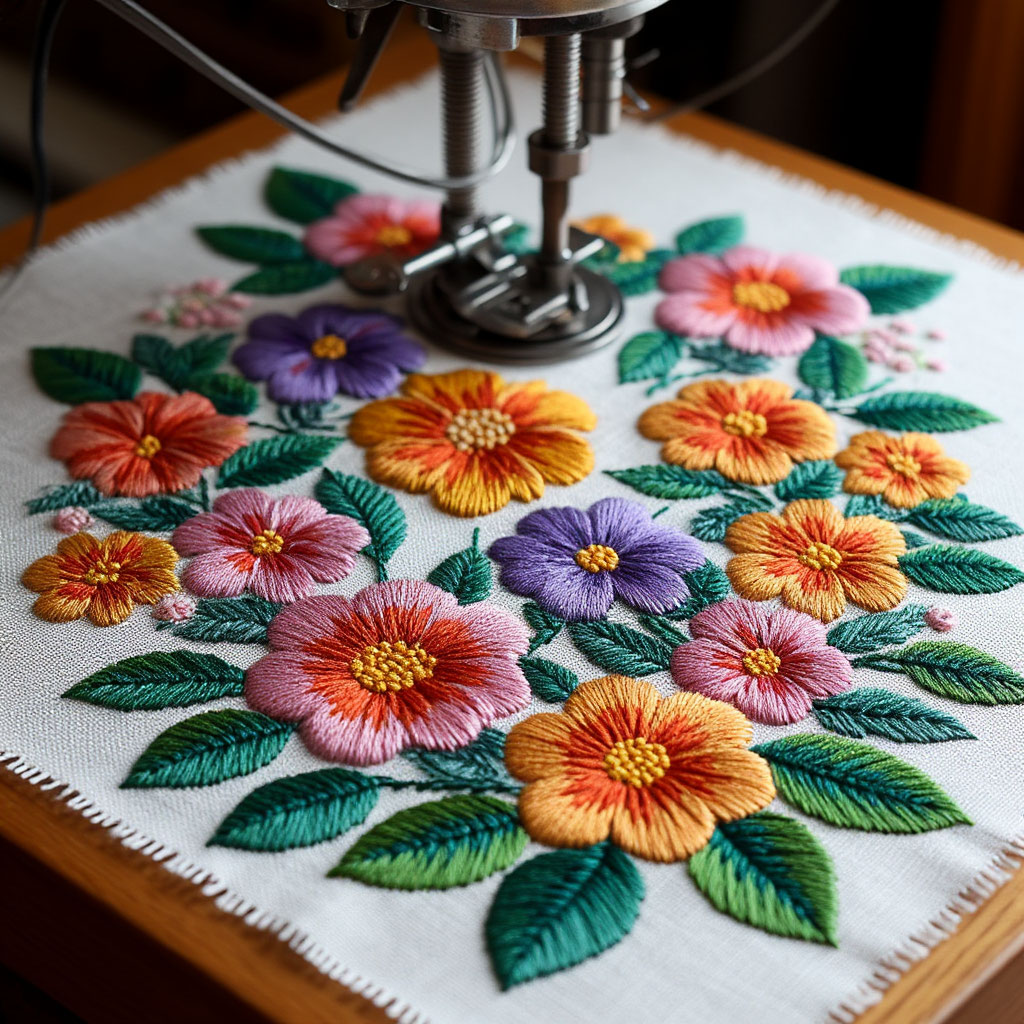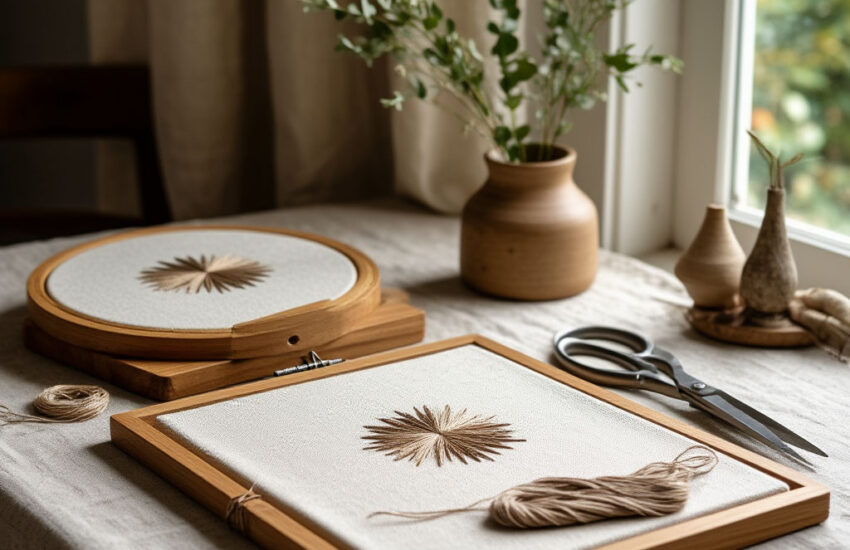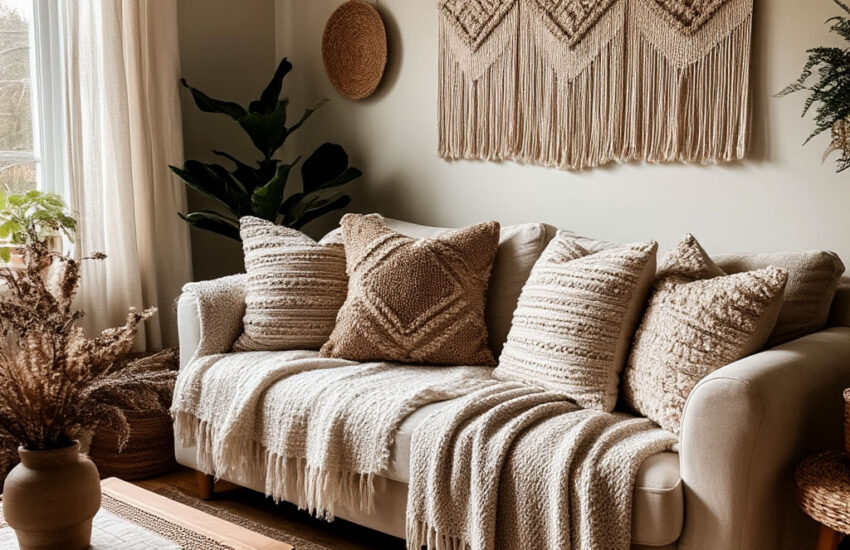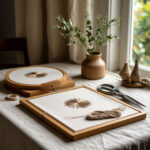Different Types of Embroidery: Techniques and Styles Explained
Contents
Embroidery is a timeless art form that has evolved over centuries, blending tradition with innovation. Whether you’re a beginner or an experienced stitcher, understanding the types of embroidery can help you choose the right technique for your next project. From hand embroidery styles to machine-stitched designs, and from traditional vs. modern embroidery to cultural embroidery techniques, this guide covers everything you need to know. By the end of this article, you’ll be able to download a checklist — a simple guide to the most important embroidery techniques and styles, from basic stitches to cultural traditions.
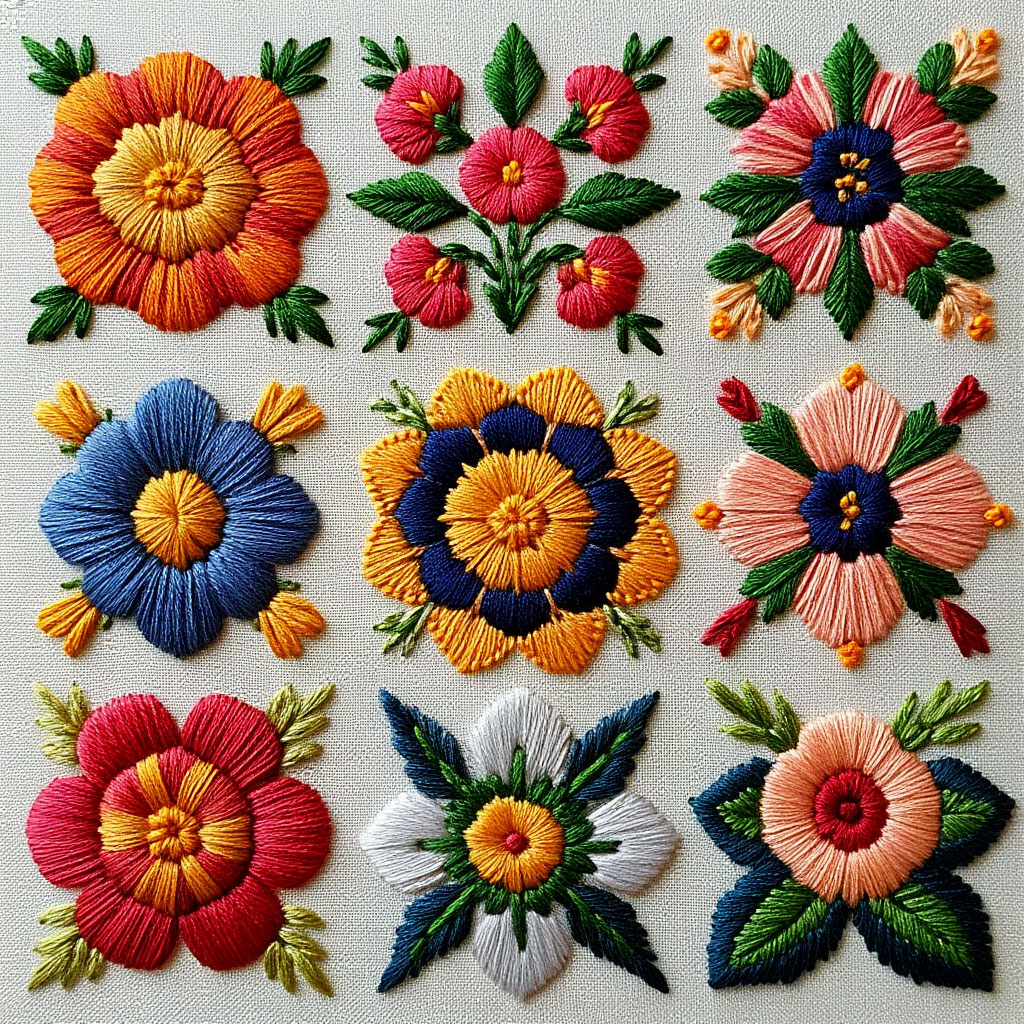
Hand Embroidery vs. Machine Embroidery
Embroidery is one of the oldest textile arts with a rich history. Whether used for decoration, storytelling, or practical reinforcement of fabric, the technique offers endless creative possibilities. Understanding the types of embroidery—from hand embroidery styles to machine techniques—helps crafters choose the best approach for their projects.
Choosing between hand and machine embroidery depends on the goals of the project, the desired aesthetic, and the time commitment. Each method has its own advantages that suit different creative needs.
The Art of Hand Embroidery
Hand embroidery remains the gold standard of traditional textile art. This method allows for complete artistic freedom, making it ideal for individual designs and intricate details. Many hand embroidery styles have deep cultural roots: Japanese sashiko and Indian chikankari preserve centuries-old traditions.
The beauty of handwork is its versatility. Stitches can be adjusted in real time, creating organic textures that cannot be replicated by machine. From the luxurious metallic threads of Goldwork to the delicate precision of Whitework, hand embroidery techniques demonstrate the skill and patience of the craftsman.
The Efficiency of Machine Embroidery
Modern embroidery machines have revolutionized textile embellishment, greatly increasing the speed of work. Computerized designs create flawless repeats, making this method ideal for commercial applications and intricate patterns. While some purists argue that machine work lacks soul, modern artists prove otherwise with their work.
The debate about traditional vs. modern embroidery ultimately comes down to the requirements of the project. Handwork excels for heirloom pieces and artistic expression, while machines dominate in production settings and when precision repetition is important.
Basic Techniques in Different Methods
A few popular embroidery stitches form the basis of both approaches. The running stitch creates subtle outlines, while the satin stitch fills areas with smooth color. French knots add texture and chain stitch creates decorative borders. Mastering these basics unlocks creativity no matter the method you choose.
Learning different types of embroidery allows artists to develop their own unique style. By blending cultural embroidery techniques with modern innovations, today’s embroiderers continue to advance this ancient craft. Whether they are drawn to the meditative quality of hand embroidery or the technical challenges of machine work, there is an approach to embroidery that suits any creative vision
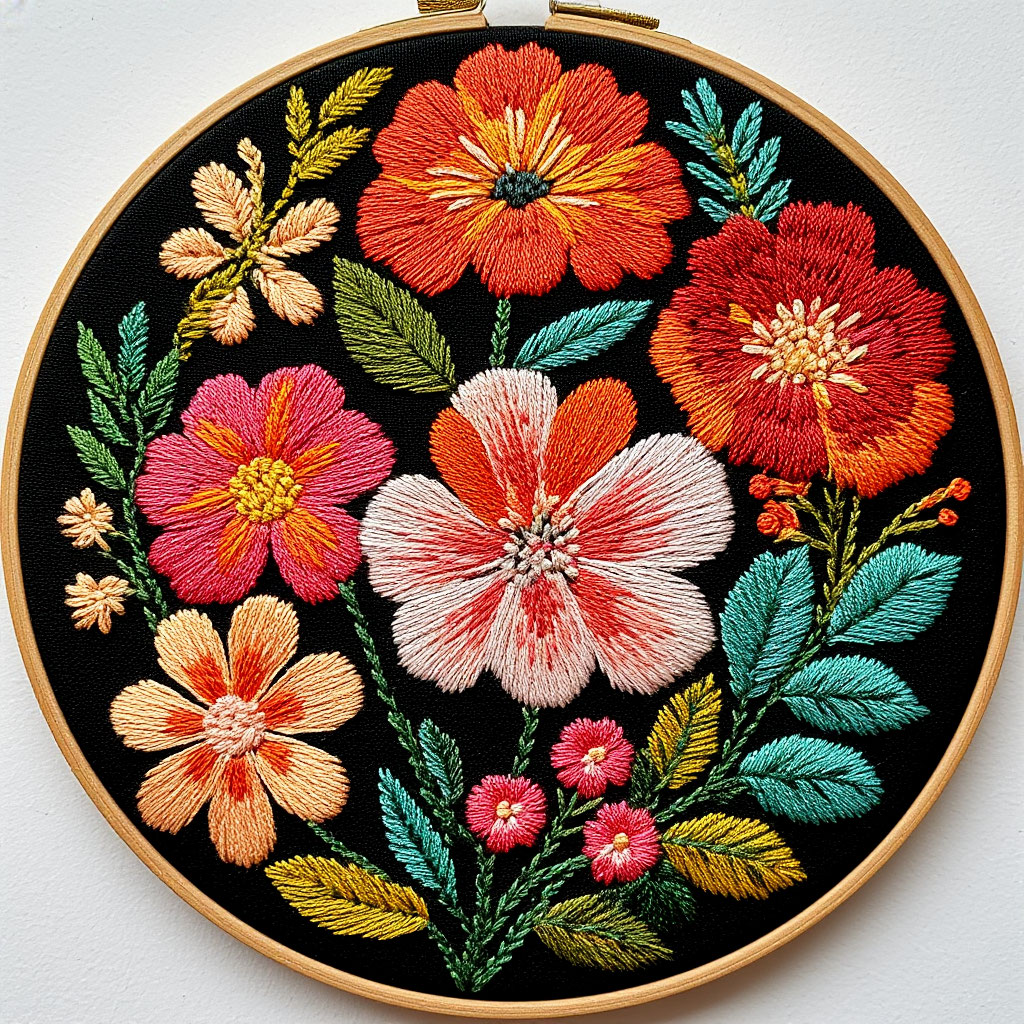
Traditional Embroidery Styles from Around the World
Embroidery serves as a living thread that connects cultures across continents and centuries. These traditional embroidery styles are not just decorative techniques, but living histories preserved in the threads. Each technique tells the story of its people, environment, and artistic evolution, offering modern embroiderers both inspiration and a connection to global heritage.
European Embroidery Traditions
The European continent boasts some of the most recognizable cultural embroidery techniques in textile history. Hungarian kalocsa embroidery explodes with vibrant floral motifs, typically done in bold reds and blues on home linens. The style developed organically as peasant women decorated their homes with nature-inspired designs.
English embroidery traditions include several distinctive hand embroidery styles. Jacobean cruel work, which originated in the 17th century, features intricate floral patterns in wool on linen. The Bayeux Tapestry, although technically more embroidery than tapestry, demonstrates how medieval Europeans used the technique to document historical events in remarkable detail.
Asian Embroidery Crafts
Asian embroidery styles display extraordinary sophistication and technical precision. The Chinese Suzhou variety, recognized as an Intangible Cultural Heritage by UNESCO, creates photorealistic images using silk threads so fine they appear painted. Japanese sashiko began as a functional reinforcement stitch for work clothes, evolving into beautiful geometric patterns that illustrate the concept of wabi-sabi (finding beauty in imperfection).
Indian embroidery traditions display incredible diversity across regions. The kantha technique from Bengal transforms recycled saris into quilted fabrics with running stitch narratives, while zardozi incorporates gold and silver threads for opulent Mughal-inspired designs. These cultural embroidery techniques continue to influence modern fashion while preserving ancient skills.
Embroidery Traditions in the Middle East and Africa
- Embroidery in the Middle East often features bold geometric patterns and metallic accents.
- Palestinian tatriz uses cross stitch to create symbolic designs passed down through generations, with patterns indicating a woman’s village and marital status.
- The Moroccan technique features intricate floral motifs in silk on fine cotton, often in vibrant, contrasting colors.
African embroidery traditions vary widely across the continent. The Ethiopian look features intricate Christian motifs executed on ecclesiastical vestments, while Nigerian Okene fabric features intricate hand-embroidered geometric patterns. These traditional embroidery styles demonstrate how needlework serves as both artistic expression and cultural documentation.
The Embroidery Heritage of the Americas
Native American communities have developed distinctive embroidery traditions using the materials available. The beadwork of the Huichol from Mexico creates vibrant spiritual images, while the silver wire embroidery of the Mapuche from Chile showcases innovative metalworking techniques. Colonial influences brought European stitches to the Americas, where they merged with indigenous traditions to create hybrid styles.
The conversation about traditional and contemporary embroidery becomes especially interesting when examining these living traditions. Many indigenous communities continue to practice ancestral techniques while adapting them to modern contexts. This dynamic preservation ensures that these cultural embroidery techniques remain relevant for new generations.
Preservation and Innovation
Today’s needleworkers have unprecedented access to global traditions, allowing them to creatively reimagine hand embroidery styles. Museums and cultural organizations work to document disappearing techniques, while craft cooperatives help sustain traditional practices through economic opportunities. Contemporary artists often reimagine these types of embroidery in surprising ways, proving that traditional techniques can fuel contemporary creativity.
The enduring appeal of these popular stitches and embroidery patterns is their deep connection to the human experience. Whether they are recreating historical objects or drawing inspiration from global traditions, today’s needleworkers engage in an ongoing dialogue between the past and the present. By exploring different approaches, we gain not only technical skills, but also a deeper understanding of the role of embroidery in human culture.

Modern Embroidery Trends to Try
The world of embroidery is experiencing a creative renaissance as contemporary artists push boundaries and reimagine what needlework can be. These modern takes on embroidery types combine traditional techniques with innovative materials and concepts, proving that this ancient craft remains vibrantly relevant in the digital age.
The Rise of Contemporary Embroidery Styles
Current embroidery trends are all about craft and self-expression. Unlike traditional embroidery styles that followed strict regional patterns, contemporary work embraces personal narrative and experimental approaches. Artists use this method of working to comment on social issues, explore identity, and create wearable art that challenges accepted fashion norms.
One significant change in traditional and contemporary embroidery is the embrace of imperfection. Where historical techniques are prized for their flawless execution, many contemporary embroiderers are intentionally incorporating “crooked” stitches and asymmetrical patterns as part of their aesthetic. This movement celebrates the handcrafted quality that sets embroidery apart from its machine-made alternatives.
Innovative Materials and Mixed Approaches
Contemporary embroiderers are moving beyond the usual threads and fabrics, incorporating unexpected materials that transform the texture and dimension of their work:
- Alternative fibers like wire, fishing line, and conductive thread create sculptural effects and functional electronic textiles
- Found objects (beads, sequins, recycled plastic) add surprising tactile elements
- Mixed media combinations with painting, printmaking, and digital elements create hybrid artworks
These material experiments often draw on cultural embroidery techniques, giving them a contemporary edge. For example, artists might augment traditional gold embroidery using modern metallics, or apply ancestral embroidery patterns to unconventional surfaces.
Technology Meets Craft
The intersection of technology and craft has created exciting new styles and approaches to hand embroidery:
- Digital pattern transfers allow for precise placement of complex patterns on fabric
- Glow-in-the-dark and color-changing threads respond to environmental conditions
- Augmented reality embroidery combines physical sewing with digital overlays
- 3D-printed elements integrate with embroidered components
This technological integration does not replace traditional skills, but rather expands the possibilities. Many artists retain popular embroidery stitches as their foundation while incorporating modern enhancements.
Embroidery as Social Commentary
Contemporary embroidery artists often use their work to address important issues, continuing embroidery’s historical role in storytelling while applying it to contemporary issues:
- Feminist embroidery reclaims “women’s work” as a means of empowerment
- Activist embroidery creates protest posters and awareness-raising items
- Memorial embroidery honors victims of social injustice with memorable portraits
This socially engaged work often draws inspiration from cultural embroidery techniques, applying them to current events, creating strong connections between tradition and contemporary reality.
Sustainable Embroidery Techniques
The contemporary embroidery movement increasingly emphasizes environmentally conscious practices:
- Recycling fabrics and materials reduces textile waste
- Natural dyeing methods minimize the use of chemicals
- Slow embroidery philosophies encourage conscious, sustainable creativity
These approaches often combine traditional embroidery styles with environmental awareness, such as adapting historical mending techniques to modern sustainable fashion.
Getting Started with Contemporary Embroidery
For those inspired to try these contemporary embroidery trends, getting started can be surprisingly accessible:
- Start with basic popular embroidery stitches as a base
- Experiment with unconventional materials on small test pieces
- Follow contemporary embroidery artists for inspiration
- Combine hand embroidery styles with digital design elements
- Document your process to track creative development
The beauty of contemporary embroidery is its openness to interpretation. Whether you are drawn to high-tech integrations or prefer to keep it simple with a modern approach to cultural embroidery techniques, there is room for every approach in today’s vibrant embroidery community.
As embroidery continues to evolve, one thing remains constant: the power of needle and thread to connect us through time. These types of embroidery demonstrate how respecting tradition while embracing innovation can lead to exciting creative breakthroughs that will last a lifetime.
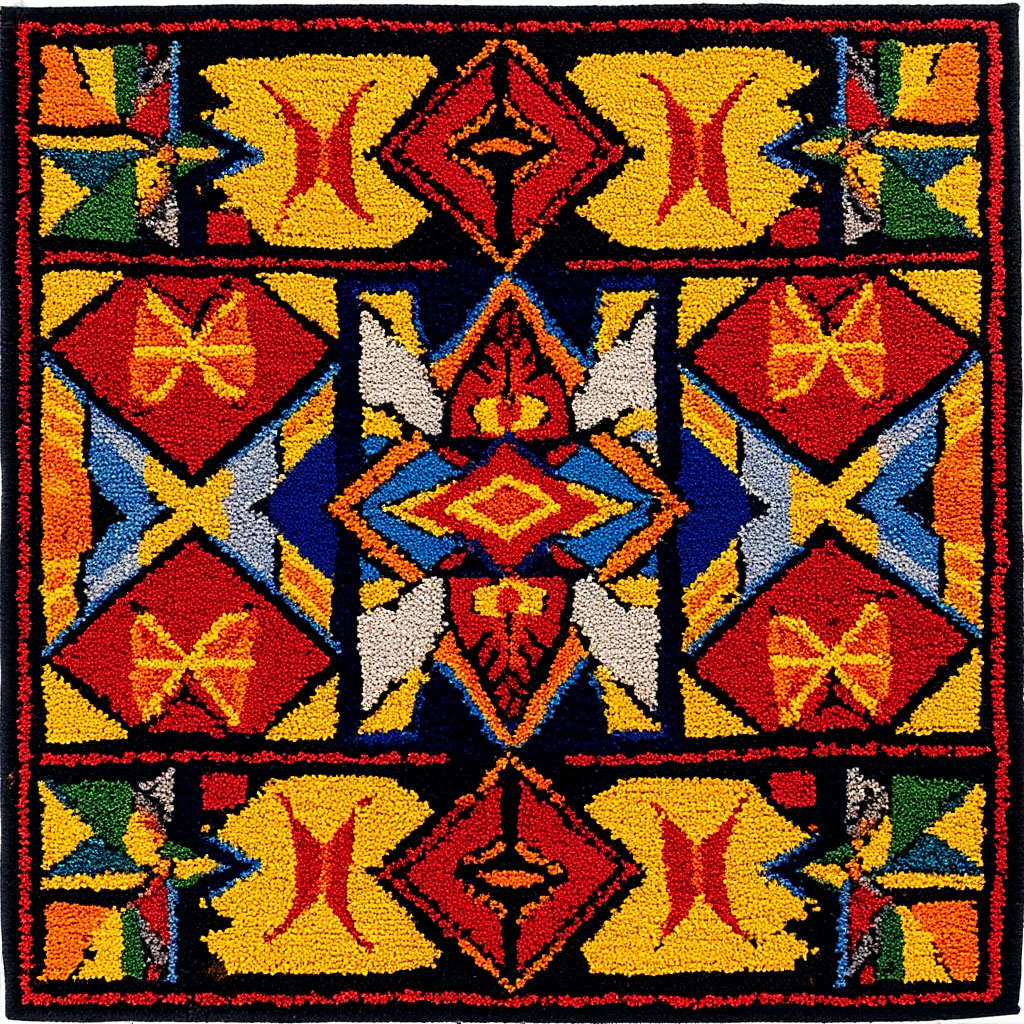
Choosing the Right Embroidery Technique for Your Project
Choosing the ideal embroidery styles for your project requires thoughtful consideration of many factors. For both beginners and experienced embroiderers, matching techniques to specific projects will provide the best results and a new experience.
Understand the requirements of the project
The main concept of your project should determine your choice of hand embroidery styles or machine techniques. Consider whether you are creating a decorative piece or a functional item, as this will influence your choice of technique. Items intended for regular use require the use of long-lasting cultural embroidery techniques versus framed wall art. Timing considerations are also important, as some techniques require more time than others. The ongoing dialogue between traditional and contemporary embroidery often centers on what best suits your vision: historical accuracy or contemporary expression.
Fabric and thread compatibility
Your choice of material will influence which popular embroidery stitches will be most effective. Delicate fabrics like silk and chiffon usually work best with fine thread embroidery and minimalist designs. Durable materials like denim and canvas can handle heavy thread and bulky stitches, including mixed media elements. Stretch fabrics present unique challenges that often make machine embroidery the preferred solution, requiring stabilizers and elastic stitches to prevent warping. Understanding these material relationships helps prevent frustration and ensures technical success.
Skill Level Considerations
Different types of embroidery present different learning curves that should help you make a choice. Beginners usually find success with basic stitches like running stitch and satin stitch, as well as loose approaches and stamped patterns. Advanced embroiderers can explore complex fill patterns, introductory gold stitches, and combination stitches that build fundamental skills. Advanced practitioners may choose to tackle thread painting, intricate goldwork, or free-motion machine embroidery. Beginning with accessible hand embroidery styles provides a solid foundation before attempting complex cultural embroidery techniques that require specialized materials and advanced skills.
Time Management Factors
The decision to choose between traditional and contemporary embroidery often depends on the time commitment available. Quick projects under five hours may involve machine embroidery or simple decorative stitches on small designs. Moderate projects, requiring five to twenty hours, allow for detailed hand embroidery and medium-sized pieces that combine multiple techniques. Long-term projects over twenty hours may involve large-scale hand embroidery, complex traditional techniques, or heirloom-worthy work. Realistic time estimates prevent projects from being abandoned and ensure satisfactory results.
Aesthetic Priorities
Personal artistic vision should guide your technique selection process. Traditionalists often gravitate toward historical cultural reproduction, regional embroidery techniques, and classic stitch patterns. Modernists often favor experimental materials, abstract designs, and the integration of technology. Eclectic artists may mix popular embroidery stitches with innovative approaches, incorporating multiple cultural influences and mixed media elements. Your aesthetic preferences ultimately determine whether you will enjoy the creative process and be proud of the finished work.
Budget Considerations
Different types of embroidery require different financial investments that require careful planning. Basic hand embroidery supplies offer inexpensive entry points, using simple stitches and recycled materials. Moderate budgets allow for quality threads, fabrics, and specialty needles for intermediate projects. More complex techniques, such as gold leaf or machine embroidery, require a more significant investment in specialized equipment and materials. Balancing aspirations with available resources ensures a sustainable creative practice without financial hardship.
Embroidery is a versatile craft with a rich history and exciting future. From cultural embroidery techniques to cutting-edge trends, there’s a style for every artist. By exploring types of embroidery, you can find the perfect method for your next creative project. Whether you stick with tradition or embrace innovation, the world of embroidery offers endless inspiration. You can now download an embroidery techniques checklist — a practical tool to help you explore different stitches, master their uses, and choose styles that match your creative projects.
